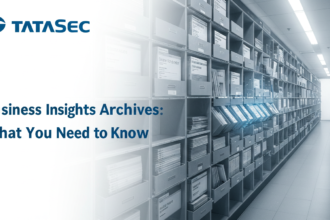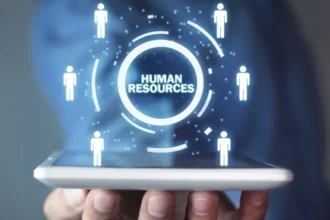Picture the ability to stream an entire movie in a matter of seconds, the convenience of operating factory robots remotely from a smartphone, or a self-driving shuttle crossing a city with almost no delay. This is the promise of the new generation of wireless technology 5G. It is more powerful, reliable, and quick. It is already changing how we live and work. In the following sections, I will explain what 5G is really doing, the actual data behind the 5G marketing buzz, the ways 5G is transforming the various sectors, and what you need to do next in simple and verifiable terms.
What is 5G, in everyday words?
5G is the fifth generation of mobile networks. Compared with 4G it’s designed to be:
- Much faster (so big files and live video move quickly),
- Much lower latency (so remote reactions feel instant),
- Able to support many more devices in a single space (so crowded stadiums or factories don’t slow to a crawl).
Put simply: 5G is the plumbing upgrade for everything that needs fast, reliable data from your phone to factory sensors to hospital gear.
How fast and how widespread is 5G right now?
The rollout has been swift. By the end of 2024, 5G connections surpassed roughly 2 billion worldwide and adoption continues to accelerate. Regions differ (urban areas usually lead), but the trend is clear: 5G is no longer niche.
Speed-wise, mobile networks are noticeably faster than a few years ago. Global median cellular download speeds improved significantly, and in many markets 5G users regularly see speeds well above typical 4G performance meaning less waiting, better video calls, and smoother cloud apps like hailuo ai. Real-world speeds vary by country and carrier, but the overall trajectory is upward.
The economics: why businesses and governments care
5G isn’t just faster web browsing. Analysts and global organizations expect 5G to create economic value across industries. Conservative, peer-reviewed and industry reports point to trillions in potential output and millions of jobs tied to mobile and 5G-enabled services by the end of the decade. As a result, there is a great deal of investment into infrastructure and private networks by governments, carriers, and big tech companies.
For businesses, 5G translates to new revenue opportunities, such as remote monitoring-as-a-service, enhanced productivity fuelled by quicker access to data and real-time automation, and entirely new offerings, including augmented reality experiences and vehicle-to-everything systems. Analysts predict strong growth in 5G enterprise markets in the upcoming years.
Real ways 5G is already changing industries
Smart factories and industry 4.0
Plants utilize hundreds or perhaps thousands of sensors. Thanks to 5G’s extensive capacity and minimal latency, machines are able to communicate in real time, thus increasing productivity and lowering downtime. In sectors that require immediate response, such as logistics, automation is becoming more dependable and easier to scale.
Healthcare and remote procedures
The early-stage trials of remote-operated surgical tools, real-time imaging, high-quality video, and enriched telehealth powered by low-latency 5G connections are paving the way for major advancements in telehealth technology, as highlighted by Coyyn.com.
This matters for rural care and emergency response where specialist access is limited.
Transport and smart cities
5G technology powers systems that decrease traffic congestion and increase safety, from traffic lights that communicate with vehicles to public transit systems that can be tracked in real time. With near real-time tracking and fast routing optimization, logistics companies can respond to feedback quickly.
A short, human example
Think of a delivery driver who used to call the hub for updates. With 5G-connected sensors and live routing, the system re-routes them automatically around traffic, tells the warehouse to prep only the likely items for that route, and alerts customers in real time. The driver saves time, customers get accurate windows, and the company reduces fuel use. That’s small-scale magic you notice in daily life.
Challenges and things people don’t always mention
Coverage vs. capability
There’s a difference between having a 5G signal and getting 5G’s full benefits. Many countries have wide 5G availability in cities but patchy coverage in rural areas. Also, not all 5G is equal: “standalone” 5G (the full, modern stack) unlocks the best features, while some networks still run hybrid setups that limit capability. Expect rollout differences by region and operator.
Infrastructure cost and complexity
Deploying 5G requires new antennas, fiber backhaul, and in many cases densification (more small cells). That’s expensive and requires regulatory coordination. Cities that plan well will move faster; places that don’t may lag despite demand.
Security and privacy
More devices and more edge processing mean more attack surfaces. Organizations must bake security into 5G projects from day one encryption, secure device onboarding, and strong identity controls are essential.
What should you do, practical moves for people and businesses
For everyday users
- Upgrade only if you need the benefits: better streaming, gaming, or hotspot performance.
- Check local coverage maps and carrier real-world speed reports before switching.
- Keep privacy and app permissions tight more connectivity can mean more data shared.
For business leaders and IT teams
- Run a pilot: test private 5G networks or cloud-edge integrations for specific use cases (warehouse automation, telehealth station, or smart-meter rollout). Small pilots teach faster than long whitepapers.
- Factor total cost: consider site upgrades, fiber, power, and security when planning ROI.
- Prioritize security and vendor governance from the start. Don’t bolt on security later.
Final thought: why 5G matters to you
5G isn’t an abstract tech upgrade for telecom nerds. It’s infrastructure, like roads or power that enables new services and behaviors. When deployed thoughtfully, it can cut waste, improve health outcomes, and let businesses offer smarter products. When rushed or ignored, it can become expensive theatre. If you’re a user, it can make everyday apps feel smoother. If you’re a leader, it’s a strategic capability you can’t ignore.
Want a one-page checklist to share with your team, a quick FAQ for customers, or SEO-friendly meta tags for this article? I’ll draft whichever helps you get this live and ranking.

















